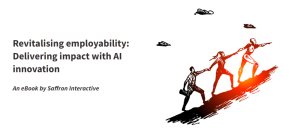Jambo! I have a task for you – think of a scenario that is as far away as you can imagine from the world of on-screen learning. Does camping for two months in East Africa hit the mark? As someone who has just been lucky enough to do exactly that (and has the silly tan lines to prove it), I’ve realised that the behaviour needed for each activity to be successful perhaps isn’t that different after all.
For starters, being able to understand and accommodate someone else’s point of view is important in both instructional design and whilst travelling with a large group of mixed nationalities, ages, and genders. To keep the group happy, even the simplest tasks need to be carefully planned and tailored to individuals. It’s very easy to assume that in a certain situation all people will react similarly, but this is not always the case – for example, whilst walking through a National Park some people wanted every detail of the flora and fauna explained to them, whilst others were more eager to get out and explore it for themselves. The best solution was to offer both options: information for those who wanted it, but the freedom to make your own choices about how to spend your time. It’s easy to see how this can be applied to e-learning – let the user take control of what they need to know, rather than dumping a lot of (possibly unnecessary) information on them.

New environments can present diverse user groups…
Another lesson I learned was the importance of feedback. The tour company I travelled with were very responsive to our suggestions, even to the point of altering the route so that everyone got to see things that were important to them. There are two points here – firstly, you don’t ask, you don’t get; e-learning users should be actively encouraged to provide feedback on courses, both during the development process and after seeing the finished product. Secondly, and more importantly for us e-learning providers, actually responding to individual needs should be at least as important a part of our process as the original design of the course. I know there’s a temptation to vaguely file feedback away as ‘something to look at next time’, but I really think that making time to tailor the course to the user’s needs –whilst obvious, does sometime get overlooked. It clears up the occasional gap between what we think learners want, and what they actually want.
However, as much as I think that learner driven content is the way forward, there is a fine line between throwing someone in at the deep end and leaving them to drown there. Taking someone to the middle of a Ugandan town and leaving them there without a map is a frustrating, time-wasting exercise, especially when there’s something there actually worth seeing but you have no idea where it is. After a couple of tentative forays into roadside stalls selling a bizarre mixture of tyre sandals, pirate dvds and chicken eggs, your traveller is likely to give up on exploring and wait for the truck to re-appear. In terms of e-learning, although ‘click Next to continue’ is not always needed, a bit of well-placed guidance saves time and wasted effort (and tempers!). After all, there should be a clear goal to your e-learning, even if it can be approached from different angles.

But if you take the right approach its never impossible to find the common ground!
All in all, I think that the ‘adventure travel’ approach might actually help us to design more fulfilling courses, by heavily involving the end user at every stage of development and letting them drive the content. Just remember to watch out for hyenas…



